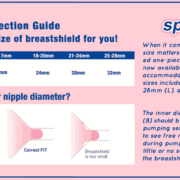Working and Pumping: The Struggle is Real

What To Know When Returning To Work
Well, it’s sadly that time, when you are headed back to work after maternity leave. Hopefully, your employer offers that necessary benefit. The baby honeymoon is over and now you have some big decisions to make regarding child care and feeding. If you’ve been breastfeeding up to this point, there is a good chance you’ll want to continue providing baby with your milk. After all, it is recommended to breastfeed exclusively for 6 months if possible to get the continued benefits such as less frequent illness. Before your actual return, try to be as prepared as possible. Make sure you know your workplace rights, have all the gear you need and have at least a general plan for how you will feasibly pump enough to keep up your supply for baby. Here are the basics to get you started:
Protection under federal and state laws
In 2010, the Affordable Care Act was signed into law with provisions related to nursing mothers and pumping at work. The guidelines include employees that are not exempt under section 7 of the law. This includes most hourly paid employees. The law specifically calls for providing a nursing mother unpaid (unless all employees are paid for their breaks) reasonable breaks with a private room for nursing that isn’t a bathroom. If your employer is smaller than 50 employees, they may be exempt from this law if it causes them “undue hardship.” For full details check out these great resources here and here. If you aren’t covered under the ACA, make sure to check your state laws. Twenty-eight of fifty states have some kind of provision related to breastfeeding.
Planning and educating yourself
First, figure out what laws you are specifically covered by depending on your employment from the resources above. If you aren’t sure, talk to your boss, human resources, or a workplace lawyer so you can start making a game plan.
Next, equipping yourself with all the essentials for successful workplace pumping is key. To maintain a good milk supply it is important to have access to the best possible pump. For time management and optimal pumping, look into getting a double, electric breast pump that is hospital strength. Under the ACA, it is also required that your health insurance provide you with a pump (either a rental or single user depending on the model). There are several pump options available and companies that will do all the footwork for you to get you the pump you need with little hassle. Spectra Baby USA is one of these companies with the added bonus of great customer service and lactations consultants on hand as needed. Check out their page for a comparison chart of different pumps to find the best option for you and you can also check their insurance lookup tool that locates a DME (Durable Medical Equipment) company that will work with your insurance policy to get you a breast pump covered by your plan.
Lastly, consider any accessories to purchase to make your life easier as a pumping mom. This includes items like a pumping bra, sterilizing tools, nipple cream, adequate collection bottles, freezer bags, and insulated tote to be able to get your milk safely to and from work. Having the right gear will keep you organized and efficient!
When and how to pump: finding a schedule.
In general, you want to pump in a way that would mimic your baby’s current feeding schedule. This generally means that a mom will have to pump every 3-4 hours. For a full-time employee that should be 2-3 times depending on lunch breaks and commute time. How you want to schedule these into your day is completely dependent on what works in your day. Regardless, make sure that you try to actually schedule these times into your calendar to remind yourself and your co-workers. It’s easy to forget or skip a pumping session if you don’t make it a priority and this can negatively impact your supply. If you are short on time one day, don’t stress and just try to get in as many short sessions as you can to keep the supply signal going to your breasts.
The last big consideration is your milk supply as your switch from breastfeeding to the use of a pump. Your baby is much better at extracting milk from your breast than a machine, so if you have trouble initially with the amount you are pumping don’t be discouraged. Keep these basic tips in mind: keep hydrated, eat healthily and frequently, stimulate an adequate let down with massage, heat or thinking of your baby (even look at a picture!), stay relaxed and comfortable and make sure you have the right size breast shield.
With the right preparation, you will manage the transition into a work-family balance well. You rock mama! Keep up the good work providing liquid gold for your child while crushing those career goals.









Leave a Reply
Want to join the discussion?Feel free to contribute!